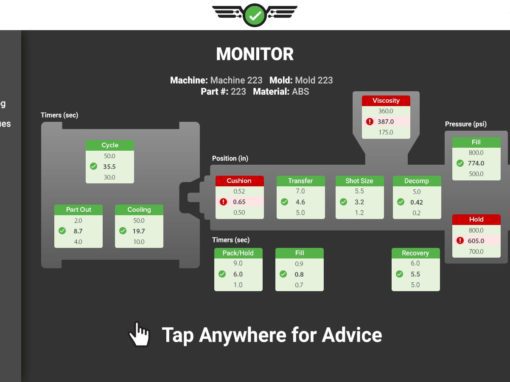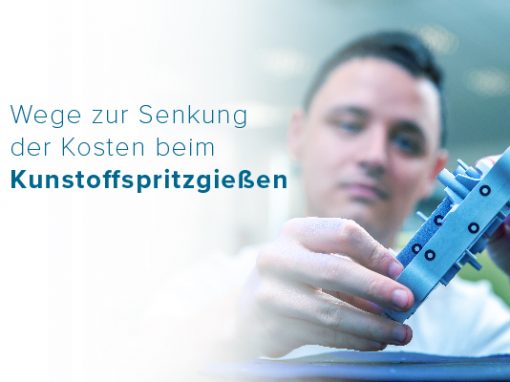Tip of the Day 74: What is „Normalized“?
This question popped up after Tip # 73. I used the term a couple of times and realized that I did not define it. We tend to toss it around here without thinking. Here is an attempt to define it.
„Normalized“ in our context means measuring and documenting molding parameters, especially on the machine, from the plastic’s point of view: the 4 plastic variables. This allows a mold to make the same parts anywhere in any machine. The values are „normal“ because they relate to the process inside the mold instead of outside.
Volume instead of Position
This is the most obvious. When you set up a machine to fill a mold the mold cavity remains the same size (not counting inserts). You want to put the same quantity (volume) of plastic into the mold during fill as the last time it ran. Of course to do this you must adjust positions on the machine’s injection unit: shot size and transfer.
If the screw diameter is different on one machine than another then it will take different screw position values on each machine to put the same volume in the mold. So by defining the fill quantity in terms of „Volume“ (cubic inches) instead of machine positions (inches) you can set up the process inside the mold the same on different machines.
Flow instead of Speed
Using a volumetric flow rate (cubic inches per second) instead of speed (inches per second) normalizes the filling rate in the same way that volume normalizes position. If we set up the process with the same flow rate then different machines may need different speed settings to get it. But inside the mold the cavity „sees“ the plastic coming it the same rate. This makes the flow rate „normalized“ between machines.
Plastic Pressure instead of Hydraulic Pressure
Similar to flow the plastic also sees pressure inside the cavity (or barrel), not inside the hydraulic unit. We use intensification ratio to multiply hydraulic pressure so that the pressure reads in values that the plastic is seeing. Thus to match hold pressures or back pressures between machines you match the plastic hold pressure instead of hydraulic. That way you end up with the same pressures from the plastic’s point of view.
Others
Instead of matching barrel temperatures to set up a process we encourage the matching of the 30-30 melt probe temperature test. Instead of matching coolant water temperatures we encourage matching the cavity surface temperature. Adjust the barrel temperatures or water temperatures until the „normalized values“ (melt and mold) match the previous setup. These methods make the process the same for the plastic inside the cavity instead of for the machine.
If this still does not explain it then let me know and I’ll have another go at it.

